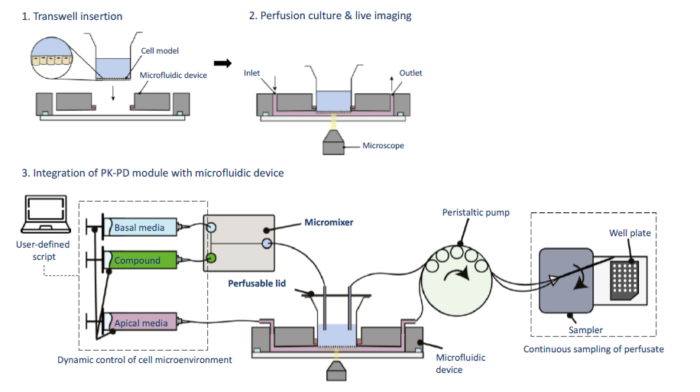NCCR AntiResist is developing a series of human tissue-based in-vitro models which reproduce aspects of our target bacterial infections in the lung, bladder, deep tissues, placenta and blood.
Tissue-based models offer several advantages over conventional in-vitro approaches. They accurately represent the human body’s complex environment and interactions, enhancing the predictive value of disease mechanisms and drug performance. They also reduce the need for animal testing and enable personalised medicine by replicating patient-specific tissue characteristics.
NCCR AntiResist Tissue Models
Several human tissue models are in development at NCCR AntiResist:
• Alevolar and bronchial lung models derived from primary human bronchial or alveolar cells (Rossy et al, 2023; Swart et al, 2024)
• Human bladder models of different complexity mimicking the stratified architecture of the bladder urothelium
• Two models of human S. aureus-infected deep tissues: an ex-vivo model; and a cell-culture model of S. aureus deep-seated infections
• A model mimicking B. melitensis infection in blood
• A transwell-based barrier model of the human placenta
We are also developing a microphysiological transwell-based platform for infection and treatment of lung, bladder and placenta barrier models.
Progress has already been made by building a transwell-based microfluidic platform enabling high-resolution imaging of airway tissues.
You can read more about this in the NCCR AntiResist paper, Transwell-Based Microfluidic Platform for High-Resolution Imaging of Airway Tissues by Kurmashev et al. at https://doi.org/10.1002/admt.202400326 »

We are benchmarking these models against clinical specimens and validating them using clinically relevant isolates of target pathogens and standard-of-care antibiotics. Validated models are augmented and refined with relevant biological components, such as immune cells, mechanical cues to mimic physical properties of tissues, or specific tissue environments, to improve our understanding of relevant mechanisms and enhance our ability to predict treatment performance.
This systematic approach revolutionises the way antibiotic targets have been identified in the past, and we hope to see new avenues for therapeutic treatments for infections in the very near future.
Leaders of Tissue Models
Prof. Andreas Hierlemann
Prof. Andreas Hierlemann
Research Page »
Prof. Alexandre Persat
Prof. Alexandre Persat
Research Page »


